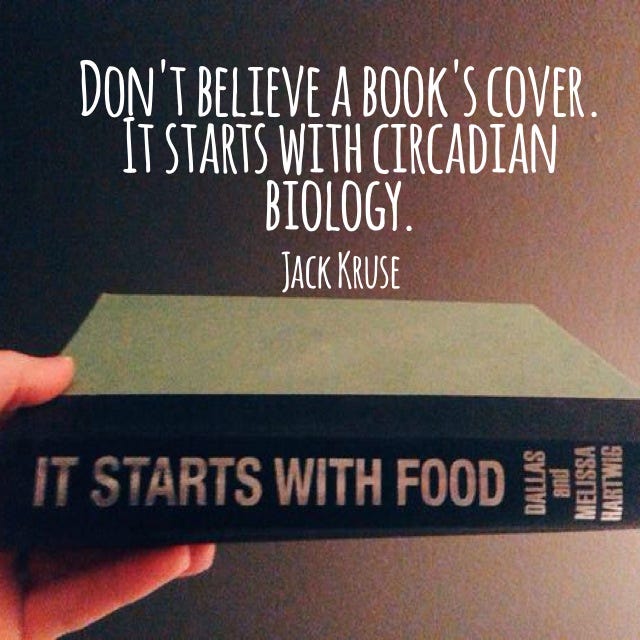Make your own antioxidant cascade
Oxidation, melatonin, and why food isn't the only antioxidant answer
Green tea, vitamin C, vitamin E... it's been many years now that diet gurus have been pushing antioxidants on us. One part of my mission here is in response to Dr. Jack Kruse's many calls for more light gurus.
When it comes to antioxidants, we a lot going on with the circadian rhythm. In particular, did you know that the circadian hormone melatonin is a super-powerful antioxidant? So if you want to know how to boost your own antioxidant profile, just optimize your circadian rhythm. This will give you abundant melatonin, and its antioxidant cascade, every night. And this endogenous antioxidant cascade can happen regardless of diet!

If all you need to know is you can reduce inflammation by boosting your melatonin, then you can close this post now. Or jump over to one of the many posts in the Brighter Days, Darker Nights archive relating to melatonin to get started:
Individual sensitivity to evening light
But if you are curious like me, you want to know more about this whole antioxidant thing.
One of the things I never fully understood from the antioxidant PR campaign was why—exactly—we need them.
From what I thought I had understood, oxidation was bad, and antioxidants stopped it. It turns out, as usual, there's a bigger picture.
What is oxidation?
Oxidation is a process by which a molecule "steals" an electron from another molecule. Oxidation can be useful. For example, the immune system uses oxidation to attack invading cells1. Oxidation, in small amounts, also aids certain processes, such as implantation in pregnancy2. But if there are too many oxidants, a situation called oxidative stress arises. This is when oxidants damage healthy tissues in the body. This happens because when oxidants steal electrons, the molecules they steal from become unbalanced and then in turn need to steal another electron... and so on.
What do antioxidants do?
Antioxidants are molecules that have an extra electron to spare. They can give an electron to an oxidant, and thereby make it so the oxidant doesn't need to steal anymore. This process is called reduction. When this happens, the oxidant becomes balanced, but the antioxidant doesn't become imbalanced.
Put it together to get redox
Together, the balance of oxidant capacity and antioxidant capacity is called redox. This is a whole field of study, very fascinating, but dense. Redox stands for reduction-oxidation. To remember this, remember the acronym OIL RIG:
Oxidation Is Losing (electrons), Reduction Is Gaining (electrons).
Let's imagine. Imagine your body is a school cafeteria. The oxidants are the bullies that steal other kid's lunches (electrons). When a kid gets its lunch stolen, it then needs a lunch, so it becomes a stealer, too. This is how oxidation rips through tissues in the body, stealing electrons. This stealing leaves behind a wake of unbalanced molecules that then need to steal, and so on.
Antioxidants are like a charity service. They come in and they have already eaten lunch. They also arrive with extra lunches. So they can give lunches to the bullies without going hungry. In the dietary world, excess oxidation is usually blamed on lack of antioxidants.
But if you step back, you have to ask: why isn't the school cafeteria providing enough lunches in the first place?
This is where I am so fascinated with endogenous antioxidants, like melatonin, as keys. We know modern, energy efficient lighting suppresses 80-100% of most people's melatonin. These lights also disrupt circadian rhythms, which are related to folate and glutathione. Glutathione is another powerful endogenous antioxidant. Could isolation from nature, then, be a contributing factor the the widespread inflammation we see these days?
Stay tuned! We'll keep exploring the non-dietary ways we can reduce inflammation in future posts. This area of wellness looking at the impacts of sub-atomic particles like electrons and protons is being called “quantum” health. This is a big new concept I’m excited to incorporate into the circadian health topic. These areas of research are so synergistic because they both point to Nature as the gold standard for wellness.
In the fact, the same place you view the sun to set your circadian rhythm may also be a source of antioxidant potential. Now that we understand oxidative stress is driven by a lack of available electrons–or “lunches”, in our school cafeteria model–what if we could access a free pool of readily accessible electrons? That’s exactly the promise of Earthing3, and could be the means by which you could get massive antioxidant activity out of your own backyard4.




“Nature as the gold standard for wellness.” Yes. 🙌 Also you finally made the whole antioxidant thing make sense. Thank you!